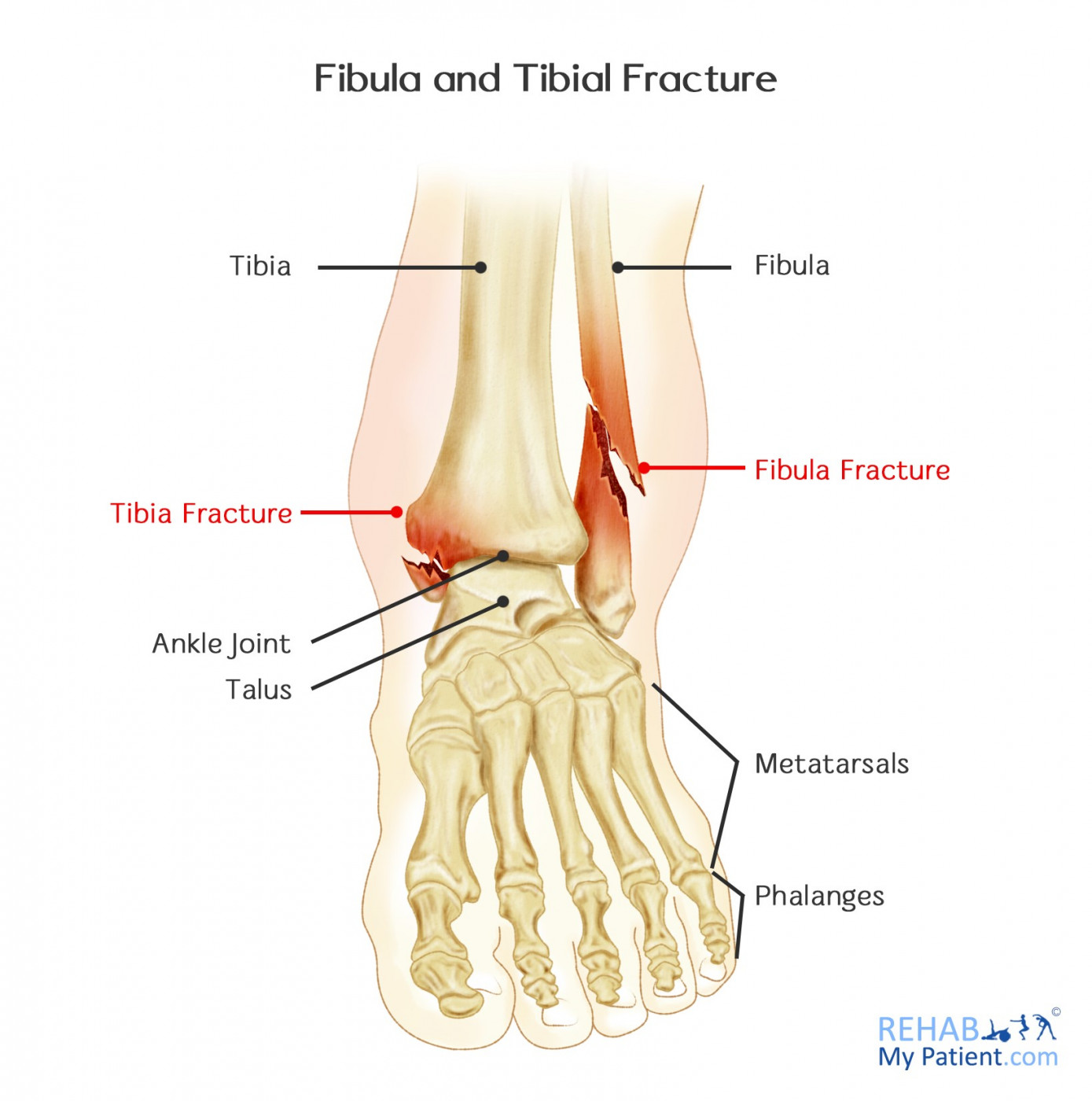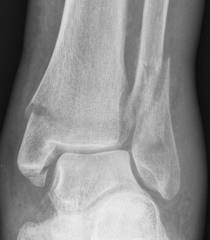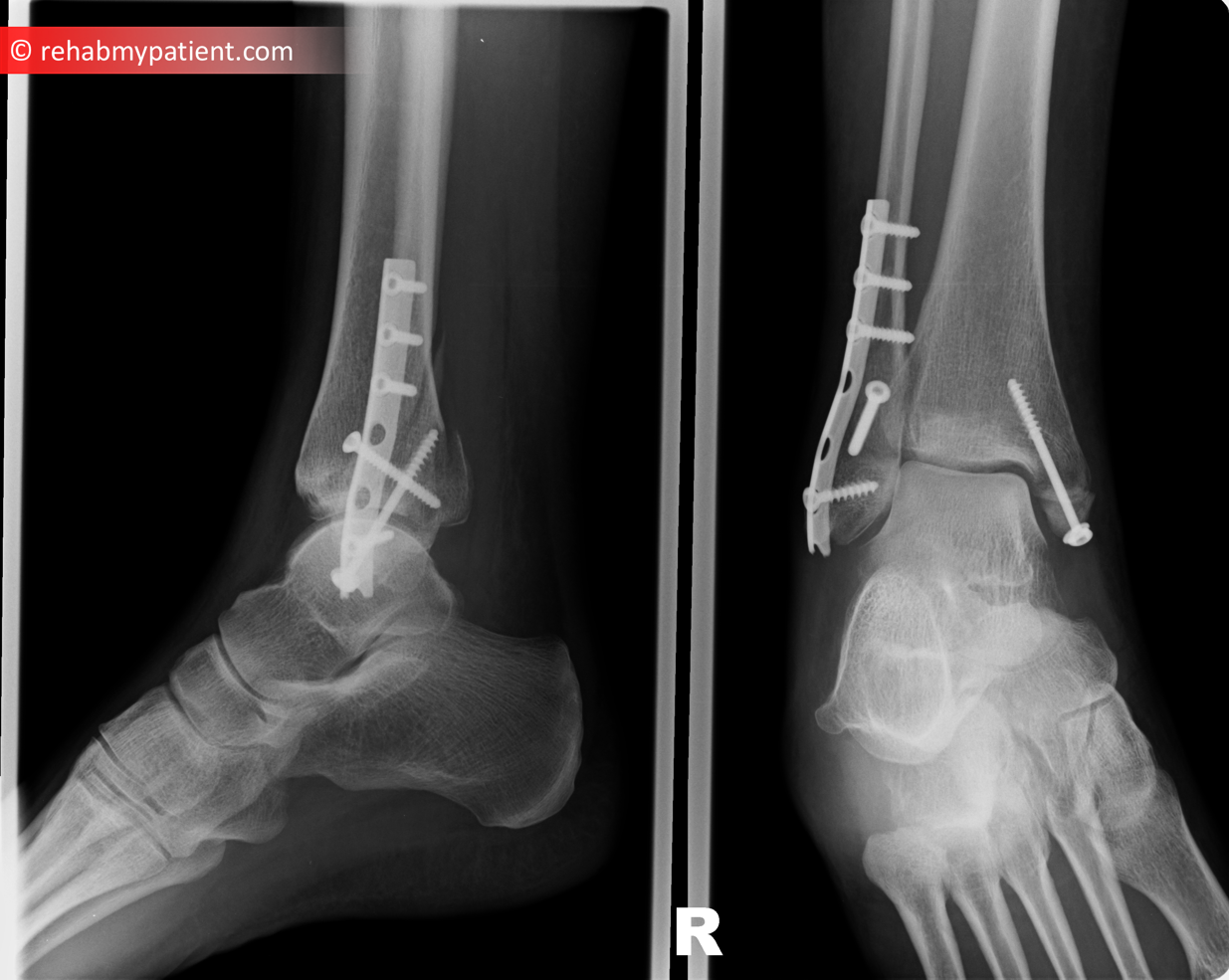
A fibula and tibial fracture is where both bones in the lower leg are broken. This commonly occurs just above the ankle. The fracture can range from severe to a simple stress fracture to that of an open fracture, which is where the bone actually protrudes through the skin. The fractures can occur in people of all ages.
The most common cause of this fracture is from trauma during sport; usually another player hits the legs or makes a bad tackle with excessive speed and force. This level of force can break both bones and dislocate the ankle. The other cause of this fracture is a bad fall, especially falling down the stairs.
Fibula and Tibial Fracture Anatomy
There are four main bones in the thigh: the thighbone (femur), the kneecap (patella), the thick bone on the front part of the lower leg (tibia) and the thin bone along the side of the lower leg (fibula). The thigh has the largest bone throughout the entire body (femur). It begins at the hip and extends all the way to the knee. The muscles of the thigh work to control the hip and knee movement. The kneecap works to protect the front of your knee.
In the lower part of the leg are two long bones, the fibula and the tibia. It is the muscles in the lower leg that control ankle and foot movement.



An X-ray showing fixation of the tibia and fibula after fracture
How to Treat a Fibula And Tibial Fracture:
- Setting the Leg
Most often you will be on a sport pitch, and require an ambulance to take you to hospital. Initially, treating a broken leg will often begin with a visit to the emergency care clinic or the emergency room. Doctors will often evaluate the injury and immobilize the leg using a splint. If you are dealing with a displaced fracture, you might need to have the pieces manipulated back into their proper position before the splint can be applied. Based upon the amount of swelling and pain you have, you might need a muscle relaxant, general anesthetic or sedative before the procedure begins. Some of the fractures will have to be splinted for a day to allow the swelling to diminish before a cast can be applied.
- Surgery
Surgery is commonly required and the use of pins and plates to stabilize the fracture is performed.
- Immobilization
Restricting the movement of the broken bone within the leg is crucial to enable proper healing. In order to accomplish this, you might need a cast or a splint. Depending on your situation, you will likely require crutches to keep excess weight off the injured leg for a minimum of six to eight weeks.
- Medication
To reduce inflammation and pain, you might need to use an over-the-counter medicine. For those who are dealing with severe pain, you might have to be prescribed an opioid medication like codeine.
- Therapy
After the splint or cast is removed, you will probably need to engage in rehabilitation exercises or physical therapy to reduce any stiffness and restore movement to the injured leg. Since you haven’t been able to move the leg for quite some time, you will probably have weak and stiff muscles in the areas that are injured. Rehabilitation can help, but it will take a few months of longer for the injury to heal.
Tips:
- Contact sports like football and hockey pose the risk of a blow to the leg, which can cause a fracture.
- Osteoporosis is another leading cause of bone fractures.
- Diabetics are at risk of fracturing the bones in their leg.
- Expect to spend anywhere from six to ten weeks allowing the leg to heal if the fracture is simple, but a complicated fracture with surgery could take around 9 months.
Sign Up
Sign up for your free trial now!
Get started with Rehab My Patient today and revolutionize your exercise prescription process for effective rehabilitation.
Start Your 14-Day Free Trial